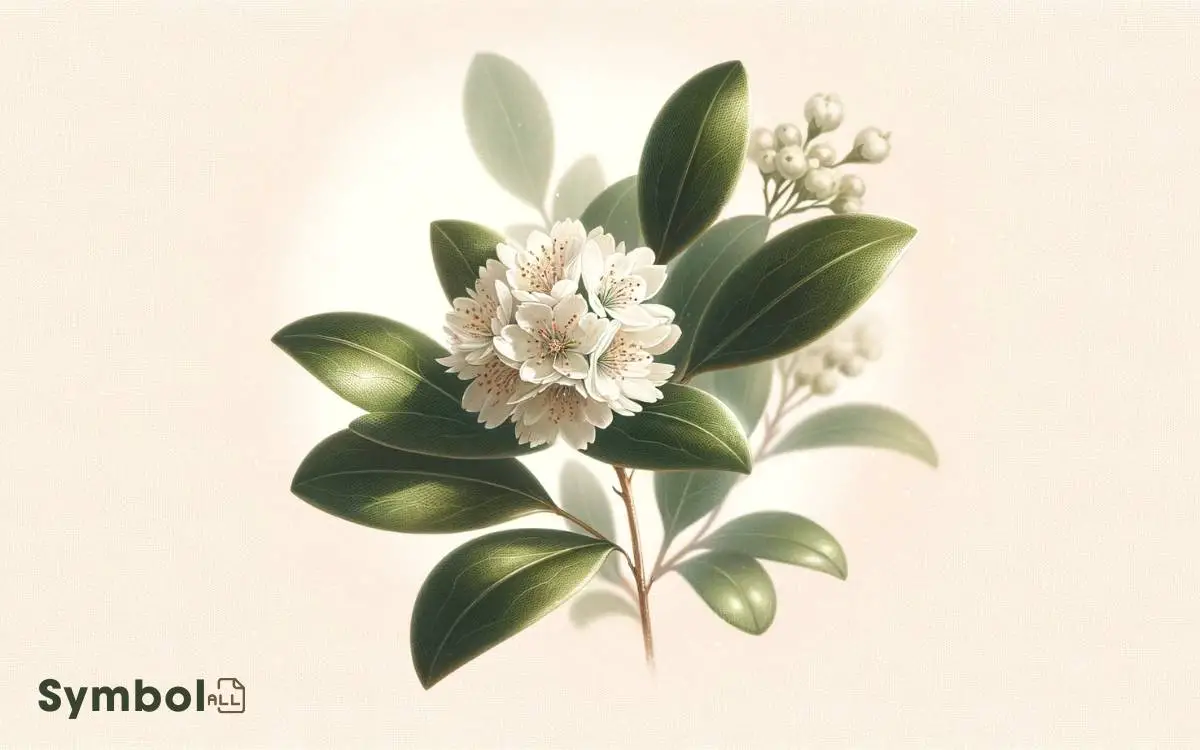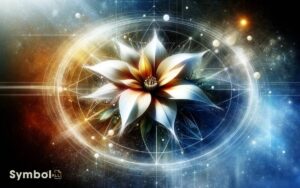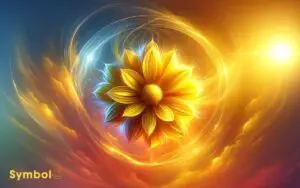What Does a Myrtle Flower Symbolize? Love, Fertility!
The myrtle flower symbolizes love, fertility, and immortality, deeply entwined with the deities of love and fertility in ancient civilizations. Its evergreen nature and aromatic leaves reflect a desire for eternal life, embodying eternal beauty.
The delicate white blossoms signify purity and heartfelt adoration, while its association with Venus underscores divine love and beauty. Myrtle stands as an emblem of marriage, representing an everlasting bond and marital unity.
Beyond marriage, it conveys peace, justice, and prosperity, varying across cultures to symbolize perpetual peace and enduring wealth. Discovering these layers reveals the profound emotional and cultural resonance of myrtle symbolism.

Key Takeaways
Historical Significance
Myrtle flowers have held significant symbolic value across various cultures throughout history, often emblematic of love, fertility, and immortality.
In ancient civilizations, myrtle was associated with deities linked to love and fertility, revealing a fundamental belief in the plant’s potent symbolic power.
Scientifically, Myrtus communis, the common myrtle, thrives in the Mediterranean region, an area rich in mythological history where the plant’s presence is heavily documented.
Analysis of historical texts and archaeological findings suggests that myrtle played an essential role in rituals and ceremonies, transcending mere decorative use.
Its evergreen nature, producing white flowers and aromatic leaves, might’ve contributed to its symbolism of eternal life, hinting at human desires for longevity and prosperity. This multifaceted significance reveals the complexity of human-plant relationships throughout history.
Symbol of Love
Delving deeper into its symbolism, you’ll find that myrtle flowers aren’t just plants but emblems of love, cherished across cultures for their capacity to embody deep affection and marital bliss.
The myrtle’s association with love is deeply rooted in its botanical characteristics; its evergreen nature symbolizes enduring love that doesn’t fade with the seasons.
Additionally, the delicate white flowers, often bursting into bloom with a sweet fragrance, are seen as a pure representation of love’s innocence and beauty.
Scientific analysis reveals that the essential oils found in myrtle have calming properties, which could metaphorically suggest the soothing effect of love on the human spirit.
This detailed understanding highlights why myrtle is more than a simple floral decoration; it’s a profound symbol of the enduring and calming nature of love.
Emblem of Marriage
Building on its role as a symbol of love, the myrtle flower also stands as a significant emblem of marriage, reflecting the union’s permanence and purity through its evergreen leaves and white blossoms.
In the domain of symbolism, these characteristics of the myrtle flower emphasize aspects that are essential to a harmonious and lasting marriage:
- Evergreen leaves symbolize the enduring nature of love, suggesting that it remains constant through all seasons.
- White blossoms represent purity and the sincere intentions behind the marital commitment.
- Fragrant aroma signifies the essence of deep affection and the enriching presence of love in the couple’s life.
These elements combined highlight the myrtle’s significance not just as a decorative choice but as a profound emblem of marital unity and love’s everlasting nature.
Purity and Innocence
You’ll find that myrtle flowers carry profound significance across various cultures, rooted deeply in their symbolic representations of purity and innocence.
Analyzing historical contexts reveals how these meanings have been shaped by both religious and secular traditions over millennia.
In contemporary times, adaptations of these symbols reflect evolving societal values, yet the core association with purity persists.
Symbolic Cultural Interpretations
Throughout various cultures, myrtle flowers symbolize purity and innocence, reflecting deep-seated beliefs and traditions. These delicate blooms carry profound meanings, deeply embedded in the fabric of cultural rituals and ceremonies.
Scientifically, the myrtle flower’s association with purity and innocence might stem from its unblemished beauty and evergreen nature, symbolizing eternal love and fidelity.
- Evergreen Nature: Represents enduring and perpetual aspects of life, mirroring the human desire for eternal purity.
- Delicate Appearance: Suggests innocence through its soft and unassuming form, evoking a sense of gentle purity.
- Cultural Rituals: Incorporated into wedding ceremonies and religious rites, underscoring the values of purity and new beginnings.
In essence, the myrtle flower serves as a powerful emblem across cultures, signifying purity and innocence with deep-rooted symbolic significance.
Historical Context Explained
Exploring the historical roots of myrtle flowers reveals their longstanding symbolism of purity and innocence, reflecting how these meanings have been cultivated and preserved over centuries.
Delving into ancient texts and artifacts, you’ll find that myrtles were intricately woven into wedding ceremonies, signifying the pure connection between newlyweds.
Scientific analysis shows that the enduring nature of myrtle, with its evergreen leaves and delicate white blossoms, made it a potent symbol in rituals focused on purity and the beginning of new life.
Additionally, in medicinal practices, myrtle was often associated with cleansing properties, further embedding its association with purity in the cultural psyche.
This detailed examination underscores how deeply the symbolism of myrtle is rooted in historical practices of purity and innocence.
Modern Symbolism Adaptations
While the historical roots of myrtle flowers are deeply embedded in the symbolism of purity and innocence, modern adaptations of this symbolism have evolved, reflecting contemporary values and cultural practices.
You’ll find that the myrtle flower’s association with these virtues now extends into diverse cultural expressions, including:
- Weddings: Emphasizing the purity of love and the beginning of a shared journey.
- Art and Literature: Symbolizing characters or themes that embody innocence and untainted beauty.
- Eco-Friendly Movements: Representing the purity of nature and the importance of preserving it.
These adaptations underscore the flower’s enduring relevance.
Connection to Venus
You’ll find that the myrtle flower holds a profound connection to Venus, emblematic of love, fertility, and beauty. This association isn’t arbitrary; Venus’s embodiment as a deity of love and fertility aligns seamlessly with the myrtle’s representation in ancient cultures.
The link underscores the plant’s role in rituals and art, celebrating adoration and aesthetic grace.
Venus: Love Embodiment
Myrtle flowers symbolically connect to Venus, the Roman goddess of love, embodying the deep-rooted associations between this plant and themes of affection and romantic devotion.
This linkage isn’t arbitrary; it’s steeped in ancient mythology and cultural practices that viewed the myrtle as a symbol of love and beauty, traits personified by Venus herself.
- Mythological Representations: Myrtle crowns were often depicted in art adorning Venus, reinforcing its symbolic connection.
- Ceremonial Uses: In ancient rituals, myrtle was used in wedding ceremonies, symbolizing love and union.
- Botanical Characteristics: The evergreen nature of myrtle, symbolizing eternal love, aligns with the immortal love Venus represents.
Understanding this connection offers insight into historical and cultural contexts where plants more than served aesthetic purposes; they were deeply symbolic, embodying complex human emotions and ideals.
Fertility Myrtle Association
Beyond its symbolic ties to love and beauty, the myrtle flower also holds deep associations with fertility, a connection further enriched by its link to Venus.
In ancient cultures, this linkage wasn’t merely symbolic; it was rooted in the observation of the natural world. The myrtle’s robust growth and its ability to thrive in various conditions symbolized a potent life force, akin to the fertile powers attributed to Venus.
Its evergreen nature, producing flowers and berries, parallels the concept of continuous renewal and the cycle of life. Scientifically, the plant’s proliferation demonstrates a resilience and adaptability, qualities essential for fertility. This connection ties closely to the flower moon symbolism and meaning, which reflects growth, abundance, and the nurturing energy of life in full bloom. Just as the plant flourishes across changing seasons, it serves as a reminder of life’s persistence and the interconnectedness of all living things. Its beauty and vitality inspire a sense of harmony and hope, embodying the fertile spirit of nature’s cycles.
The myrtle’s association with fertility isn’t just a historical or mythological artifact but is underscored by its biological characteristics and lifecycle, reflecting a deeper, almost universal understanding of fertility and creation.
Beauty and Adoration
Throughout history, the myrtle flower has been deeply intertwined with Venus, symbolizing not only beauty but also adoration within various cultures.
This connection to Venus, the Roman goddess of love, highlights the myrtle’s role in both ancient rituals and modern ceremonies as a symbol of unparalleled beauty and the deeper, often complex nature of adoration.
- The myrtle’s evergreen nature symbolizes eternal beauty, transcending seasonal changes.
- Its delicate white blossoms represent purity and the innocence of a heartfelt adoration.
- The plant’s association with Venus emphasizes the divine quality of love and beauty, elevating its status beyond mere floral admiration.
In understanding the myrtle’s symbolism, you’re delving into a rich tapestry of human emotion and cultural history, where beauty and adoration are intertwined with the divine.
Peace and Justice
In the domain of symbolism, myrtle flowers are often associated with notions of peace and justice, reflecting their historical use in various cultures to signify harmony and equitable resolution.
You’ll find that the myrtle’s evergreen nature symbolizes the perpetual aspiration for peace and the enduring pursuit of justice.
Scientifically, the plant’s resilience and ability to thrive in various conditions mirror the societal quest for stability and fairness.
Culturally, the use of myrtle in peace treaties and legal ceremonies underscores its role as a botanical ambassador of justice.
Analytically, the myrtle’s symbolism in peace and justice contexts isn’t mere coincidence; its widespread appeal and enduring presence in cultural practices highlight its deep-rooted significance in promoting societal harmony and resolving conflicts.
Myrtle in Funeral Rites
Shifting focus to the domain of funeral rites, myrtle flowers serve a profound role, symbolizing remembrance and the eternal nature of love in times of mourning.
This tradition, deeply rooted in various cultures, highlights the universal language of flowers in expressing sentiments that words often cannot.
In funeral rites, myrtle is pivotal due to its:
- Evergreen nature, symbolizing eternal life or memory.
- Fragrant leaves and flowers, offering a sensory reminder of the deceased’s spirit.
- Historical significance in mourning rituals, providing a bridge to the past and continuity with tradition.
Scientifically, the myrtle’s resilience and perpetual greenery mirror the human desire for immortality and the hope that love, like the myrtle, endures beyond death.
This symbolic use underscores a collective need to honor and remember loved ones, transcending the physical to the spiritual domain.
Prosperity and Wealth
Delving into the domain of prosperity and wealth, myrtle flowers symbolize not only emotional richness but also material abundance, according to numerous cultural beliefs. This association isn’t arbitrary but stems from the plant’s characteristics and historical uses.
The myrtle plant’s evergreen nature, symbolizing eternal life, extends metaphorically to signify enduring wealth. Additionally, its prolific nature, with the capacity to produce abundant flowers and berries, mirrors the idea of fertility and prosperity.
Scientifically, the myrtle’s adaptability and resilience in various environments further underscore its representation of wealth, suggesting that prosperity thrives under diverse conditions.
This multifaceted symbolism encourages a deeper appreciation for myrtle, not just as a plant, but as a beacon of prosperity and wealth in one’s life.
Cultural Variations
Across various cultures, the symbolism of myrtle flowers encompasses a wide spectrum of meanings, reflecting diverse traditions and beliefs.
You’ll find that in ancient Greece, the myrtle was sacred to Aphrodite, symbolizing love and beauty. Meanwhile, in Jewish tradition, it represents marriage and fertility, often used in wedding ceremonies.
The cultural variations in the symbolism of myrtle flowers highlight:
- Love and Beauty: Emphasized in Greek mythology, associating myrtle with Aphrodite.
- Marriage and Fertility: In Jewish customs, myrtle branches are part of wedding ceremonies, symbolizing a fruitful union.
- Peace and Death: In other cultures, myrtle signifies peace and is used in funerary rites, reflecting a respect for the deceased and a peaceful passage.
This diversity in symbolism showcases the myrtle’s adaptability across different cultural landscapes, illustrating its multifaceted significance.
Conclusion
In the domain of symbolism, the myrtle flower stands as a beacon of love and marriage, yet it also whispers tales of death in funeral rites. This juxtaposition captures the essence of life’s cyclical nature.
Emblematic of Venus, it embodies purity and passion, while also heralding peace and prosperity.
Analyzing its significance, we find a complex tapestry of meanings, from the depths of ancient rituals to the heights of cultural celebration, making the myrtle a multidimensional symbol in our collective psyche.






